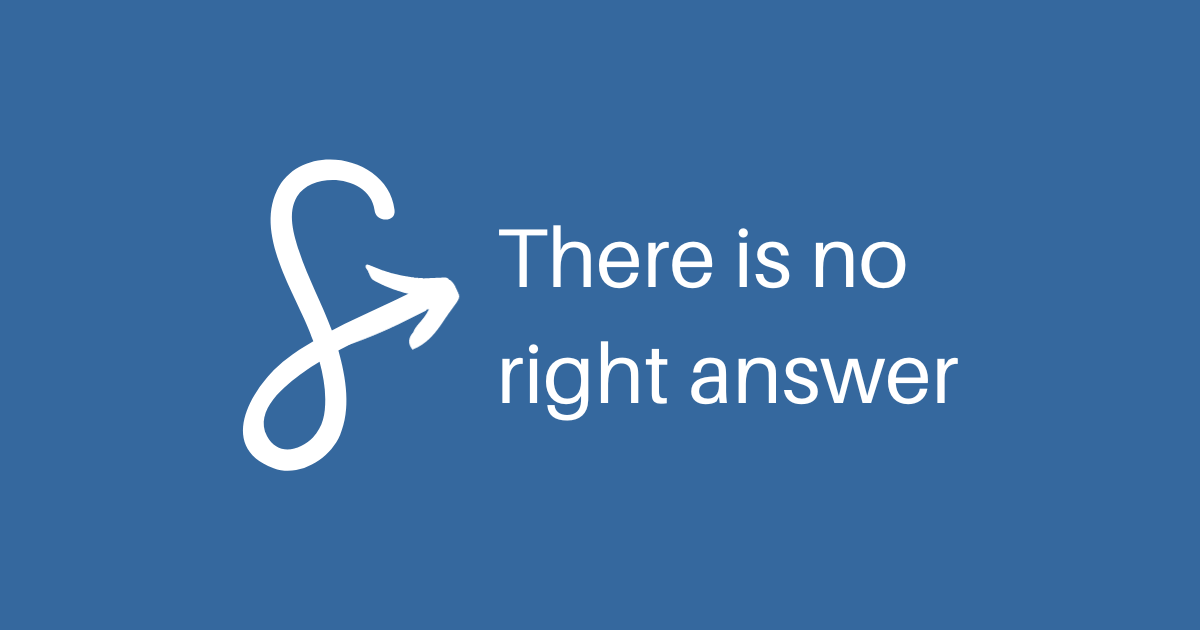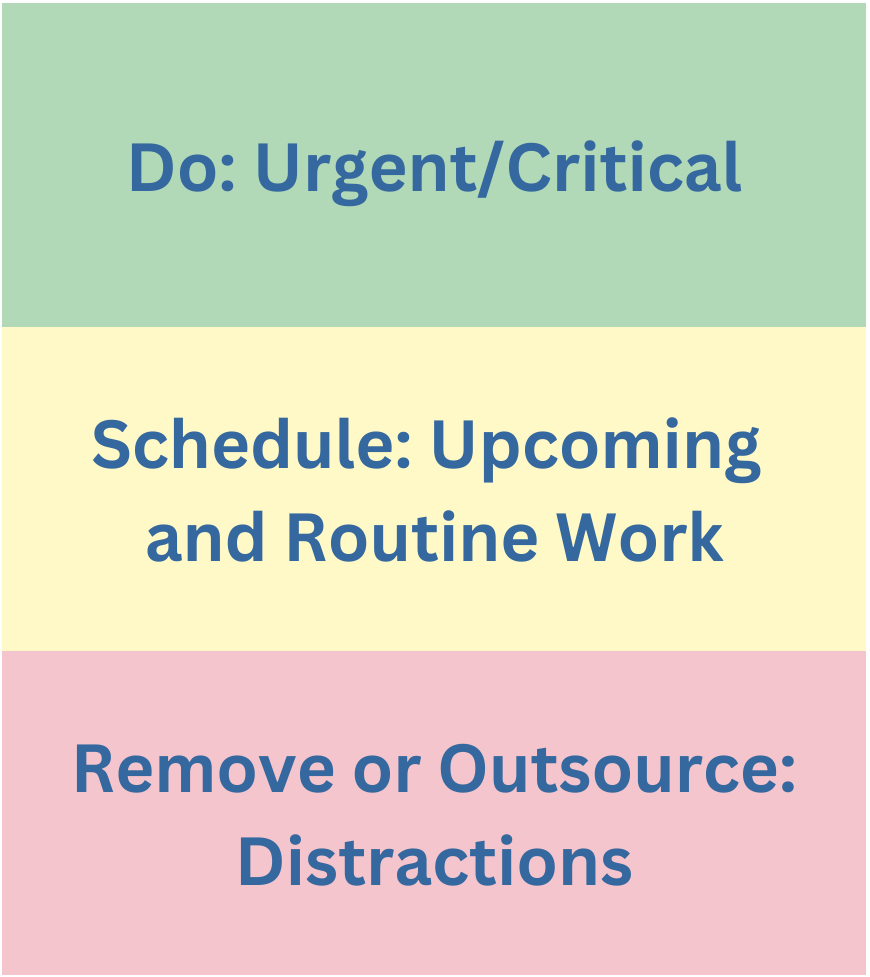- Thrive Thursday.
- Posts
- There is no right answer
There is no right answer
Stanton Coaching: December

This month’s newsletter is inspired by those moments when you really need to make a decision but just can’t seem to make it happen.
Whether you’re developing yourself professionally or growing your business, there will be times when you have to make difficult choices with imperfect data.
Whether or not to switch careers / jobs
How to approach a difficult conversation with a colleague
Where to invest limited resources in product development
All the second-guessing and overthinking cost you valuable time, energy, and - in some cases - money, as you delay taking action.
Not to mention, it can just drive you a little bananas.
This month’s reading time: ~9 min (doing it big for year end!)
Mindset Shift: Move past decision paralysis
Tactical Tools: My favorite prioritization frameworks
Stanton Coaching Update: New program launch! Limited spots
1. Mindset Shift: Move Past Decision Paralysis
I know you’ve been there: Talking for days, weeks, sometimes even years about the same problem over and over again.
You think in circles, trying to find the ‘perfect’ solution that’s ‘guaranteed’ to ‘maximize reward’ while ‘minimizing risk’.
Suddenly, 5 years have gone by and you’re still complaining about the same person at your same job or made no progress on your business idea.
Decision-paralysis is real.
There’s one key mindset that you need to embrace to move past it:
There is no right answer.

Okay, I guess sometimes there is a right answer.
I know you desperately want there to be.
I know you want to be able to perfectly predict the future.
I know you want to know for sure if the reward is worth the risk.
But, unfortunately, that’s not the way it works (no matter how much control you try to artificially incorporate into your life).
That’s why faith in yourself - and your why - is critical.
Not faith that you’ll make the perfect decision every time.
Faith that you’re making the best decision for you, based on the information that you have.
Faith that you’ll be able to adapt, whatever the outcome.
No decision is still a decision, so next time you’re stuck spiraling in circles, try this process to take action instead:
Validate: Get specific on your options. Clarify the real set of potential actions and verify this is actually something that you have control over.
Time box: Set a deadline. Tell someone to hold you accountable.
Do this before the next step, so that you don’t get stuck in analysis mode.
Analyze: Define what additional information will influence the decision and how you can quickly and simply gather it before the deadline.
If there’s no more data that you can gather, confront whatever fears are holding you back.
Decide: Make the decision. Talk it through with a trusted advisor.
If your decision is ‘no decision’ commit to letting it go. Put a date to revisit if needed and don’t waste energy until then.
Document: Write down your assumptions and rationale, so that you can refer back to them in the future if doubt comes up.
Reflect: We rarely give ourselves credit for good decisions. Life just continues along until we’re faced with another tough choice.
Set a reminder to assess the outcome of the decision, what you learned, and how that may impact future choices.
Don’t let the fact that there’s no right answer scare you.
Let it liberate you to make faster decisions that are grounded in reality, aligned to your goals, and right for you.
The clearer your values, vision, and goals, the easier this becomes.
Make sure to catch the January newsletter where I’ll share my favorite ways of evaluating different types of decisions, including Factor Rating and Creative Inclusivity.
2. Tactical Tools: Prioritization Frameworks
Decision-making and prioritization are very close cousins.
Prioritization frameworks are used when you have a lot of information and paths you can take, but no structure to evaluate them.
Use these tested methods to organize your thoughts and reduce the number of options you need to decide between.
For prioritizing projects: Impact/Effort Matrix

Whether you’re a business of one or a business of 100,000, prioritization is critical, especially when resources are tight.
Use the matrix above to evaluate tasks and projects by Impact and Effort (define both for your context!) to determine where to focus your energy.
Complete Quick Wins as soon as possible
Create clear action plans for Big Projects
Schedule Fill-In Tasks where feasible, being careful not to over-do it
Throw away Time Wastes and don’t look back
I know you want to do everything, but that often leads to doing nothing.
Pro Tip: If you’re struggling to determine the impact of projects, add fast tests to your ‘quick wins’. Then, rate the larger project based on the results.
For cleaning up your task list: Triage Method
Have you ever opened your to-do list, then shut it immediately because it overwhelmed you so much?
We tend to add action items faster than we complete them.
This makes procrastination of important tasks inevitable as we check off things that didn’t really require our attention while avoiding the big rocks.
Instead of giving yourself a false sense of accomplishment by completing unnecessary tasks, take time to triage your to-do list:
Urgent/Critical: Prioritize any items that must be done by you in the next week. These are at the top of your list and get your attention first.
Upcoming: These are your responsibility but not yet due. Schedule a date to revisit and hide them until urgent items are done.
Routine Work: If you’re constantly adding the same items to your list, free up mental space by scheduling them in at regular cadences.
Distractions: When something has been on the to-do list for a few weeks, chances are it isn’t getting done. Do it today (if it has real value), throw it away, or outsource it.
Feel weight come off your shoulder with a significantly reduced set of priorities.

Pro Tip: If you have an iPhone, the ‘Reminders’ app makes triaging a breeze and allows you to assign each task a date. The best part? When you check things off, they magically disappear.
3. Stanton Coaching: New Program Launch!
I’ve had so much fun building my business over the last ~1.5 years.
I’ve coached hundreds of people, tested various methods and program, and analyzed hours of conversations.
Based on what I’ve heard from you and what I’ve seen work best for clients, I’m excited to introduce my 2024 offering:
Stanton Coaching’s 6-Month Personal Leadership Development Program
You can learn more here and add yourself to the Discover Call waitlist here (if you’ve already added yourself to my 1:1 waitlist, I’ll be reaching out soon!).
We’ll set specific, personalized, but overall this program helps you make better decisions and better manage uncertainty, the two most common challenges that I see leaders face when dealing with career challenges.
I’m only taking on 3 new clients to start, so don’t miss your chance!